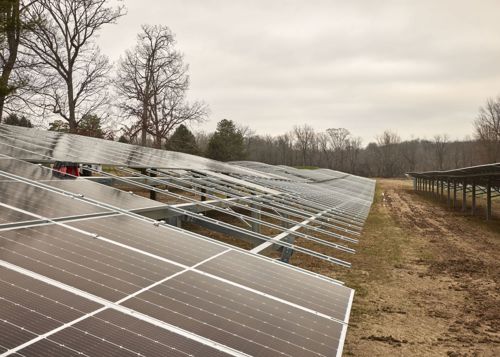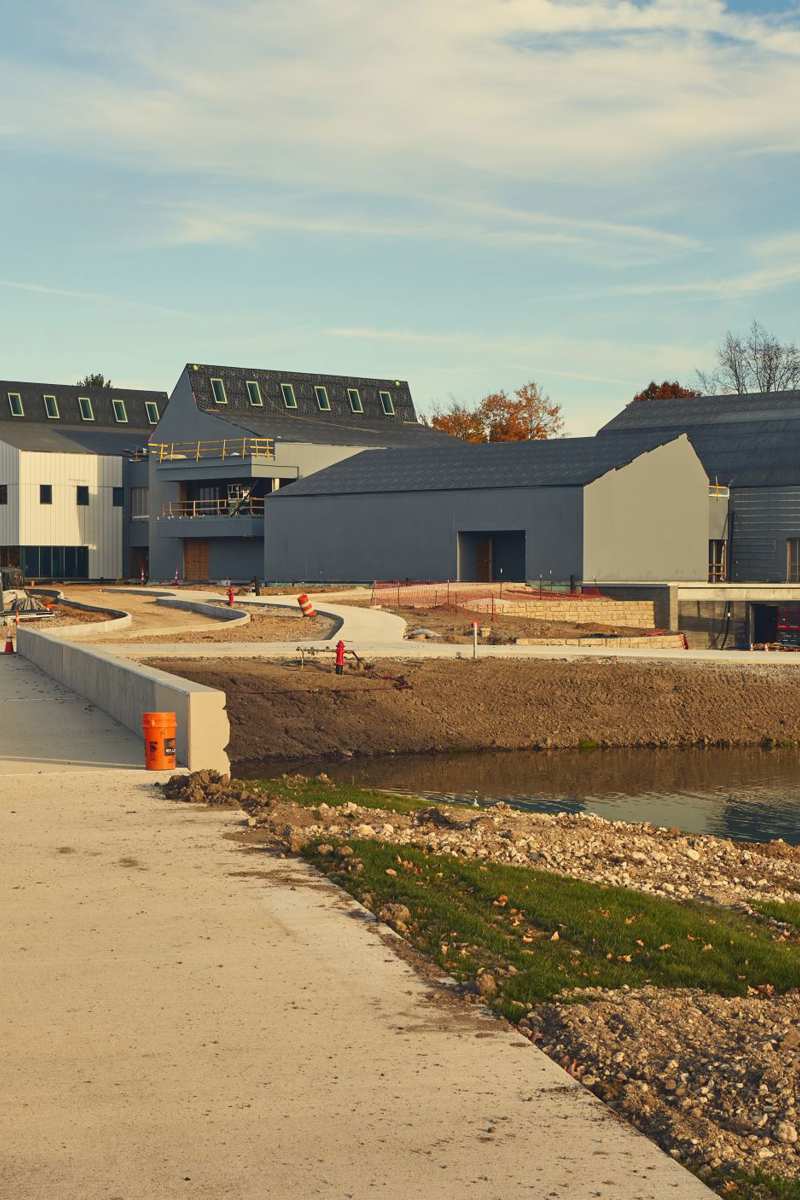Sustainability has been at the center of plans for the SEED Campus from the start. One key component – a two-acre solar array that’s projected to generate as much electricity as the campus uses on an annual basis – is nearing completion.
Panel installation wrapped up last week, and once panels are secured and connected to the utility system, they’ll begin powering Davey’s new research and training campus.
A Net-Zero Site
“It’s really exciting because it contributes to our sustainability goals of the campus and our goal of earning Gold LEED certification,” says Dan Herms, Vice President and General Manager of the Davey Institute. “All of the electricity is coming from the solar arrays, so it’ll be net-zero.”
Davey partnered with Paradise Energy Solutions for the array’s installation and back-end maintenance. Once everything’s up and running, likely in April, a dashboard will reveal how much electricity is being generated at any moment, along with how much is produced monthly and how many trees have been saved over time. On sunny days, the array will generate more electricity than needed, and the surplus will be banked as credit with the utility company. On cloudy days, the campus will draw power from the utility company using the banked kilowatt-hours.

Studying New Solutions for Clients
The solar array’s research potential is equally exciting. Davey has been working with clients to manage vegetation in and around solar fields for some time, but there’s plenty to still discover. Research plots around the arrays will be planted in the spring to examine vegetation management strategies including pollinators, low-maintenance groundcovers, high-flash-point vegetation that would be more resistant to fires, agriculture, and more.
Bill Stendrup, Project Developer for Davey Resource Group, is leading some of the research and says he’s intrigued by the opportunity to offer new solutions to clients.
“This array represents a lot of the landscapes that we see in the field. We’ll be able to research erosion control. We’ll monitor light conditions and soil temperature and moisture,” he says. “It’s really opening up an opportunity for us to explore what maintenance options are going to be most beneficial for us, and we can scale that up to commercial grade and offer that to our clients.”



